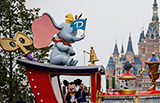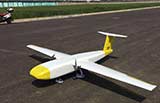Trees planted to form a barricade to pollution
By Zheng Xin (China Daily) Updated: 2012-11-08 08:15More green plants are standing sentry on the outskirts of Beijing as authorities attempt to reduce pollution and make the city a more pleasant place to live.
By the end of October, more than 13 million trees had been planted over 138 sq km, mostly around the Sixth Ring Road.
 |
|
Workers plant trees in the Caijiahe area of Beijing on Nov 1. Wang Jing / China Daily |
The area was equal to more than 83 percent of the target the capital's forestry bureau had set for the project this year.
"Northwestern winds that hit the capital in winter usually bring sand and dust from the north to downtown," said Wang Shuqin, deputy director of the landscape and forestry bureau for the city's Yanqing district.
Newly planted poplars, pagoda trees and grass will help to reduce the pollution that at times fouls the air in Beijing's downtown, she said.
The 250-sq-km afforestation project is mainly being carried out in bordering areas between urban and rural parts of the city. It is meant to act as a protective screen and shield the city from the sand and dust that periodically blows into it from neighboring provinces.
About 95 percent of the trees that have been planted are growing well, according to the Beijing Municipal Landscape and Forestry Bureau.
In summer, winds carry dust and sand to the capital, a result of there being large stretches of bare land with little tree cover, Wang said.
As part of the 250-sq-km afforestation project, the district has planted trees on more than 13.8 hectares. Most of them have been planted by highways and railways.
The green guards are expected to help lower the amount of PM2.5, particulate matter with a diameter no bigger than 2.5 micrometers, in the air and reduce the chances Beijing residents have of developing heart and breathing conditions, as well as lung cancer, said Wang Qiuxia, a researcher for Green Beagle, an environmental protection NGO in Beijing.
According to the Beijing Municipal Environmental Protection Bureau, 24.5 percent of PM2.5 contaminants in the capital come from neighboring provinces. Preventing them from coming in will greatly improve the city's air.
The newly planted trees are expected to prevent as much as 2,096 metric tons of dust from getting into the air each year, the bureau said.
"The channel for pollution in the past has turned into a natural protective screen, intercepting the dust before it can go further," Wang Shu-qin said. "The difference will be felt as soon as this project is completed."
The greenbelts will also render the community a more pleasant place to live, she said.
Beijing has set up 35 air-monitoring stations and has started releasing reports in real time on PM2.5 density, as well as the air's concentration of sulfur dioxide, nitrogen dioxide and PM10.
One of the stations, in Changping, another northwestern district of the capital, is charged with studying how cities and suburbs near Beijing add to the pollution in the capital.
"We used to have some 50 coal yards in the district, and that made the city's air quality worse, especially in the winter," said Wang Xia, deputy director of the district's afforestation office. "About 30 of the coal yards have been moved out and the remaining 20 are to be cleared away in the near future and replaced using afforestation. So it's believed that the air quality will improve noticeably."
zhengxin@chinadaily.com.cn
- New technology to encourage Chinese 'medical tourists' to Australia
- Xi says it's time for philosophy to flourish
- One Country, Two Systems: Top legislator sees bright future
- New app to guide visually disabled
- Father and son poisoned by disinfectant in McDonald's drink
- Chinese in their 40s the most enthusiastic about Shanghai Disneyland
- Supply-side reform should be pushed resolutely, says Xi
- Rail capacity boosted under new operational plan
- Media mogul buys Song Dynasty letter for $31.7m
- China becomes No 1 in voluntary organ donations in Asia








